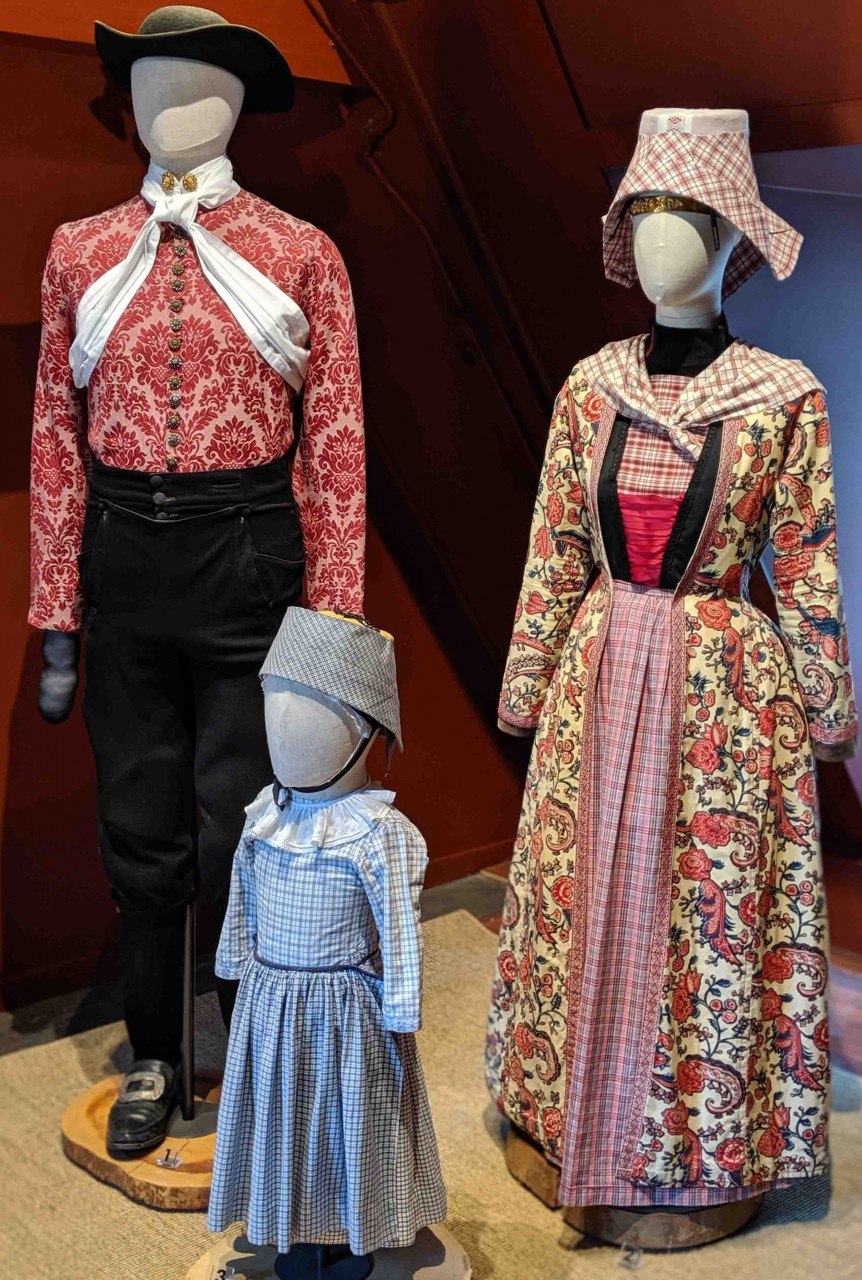
The history of Dutch Costume includes chintz. The costumes of the Netherlands vary by region, but the folk costumes have an explosion of colors and designs. Did I also mention that it includes wearing chintz? Bright beautiful bold prints, perfect for interior décor or quilts or clothes. Chintz that can’t be missed and should never be forgotten. The costume museum also preserved the stories told through the costumes worn. For example, the fisherman sweaters in which each village knitted a pattern common to the town. Then, when a man went overboard and washed up on shore, they knew in which village the man had resided. In Spakenburg, each woman makes her own the handmade bonnet, creating a self-invented pattern. The crocheting of these bonnets is very labor intensive requiring about a hundred hours to create a...





